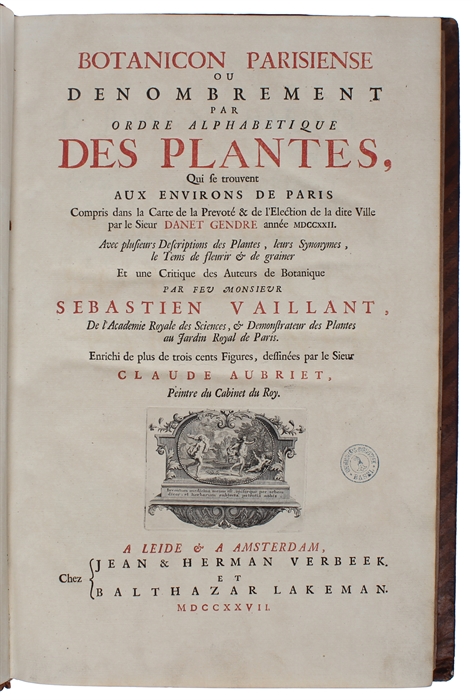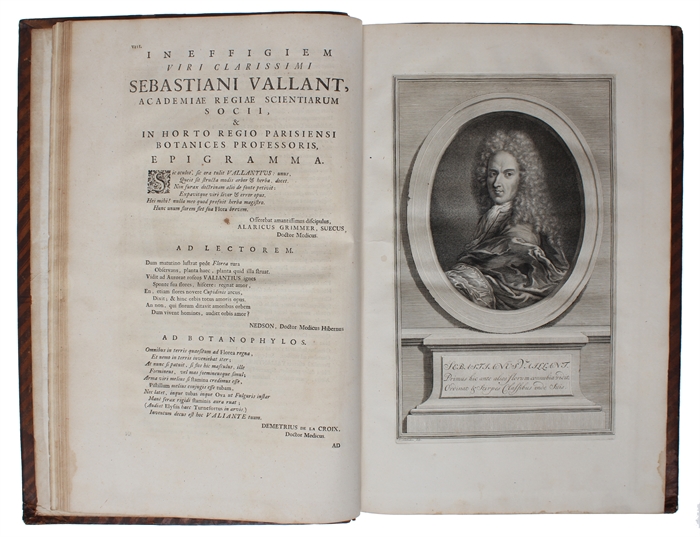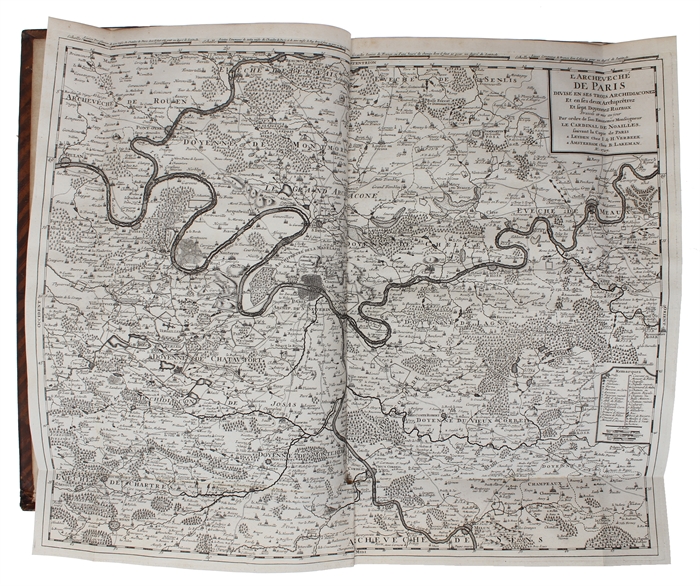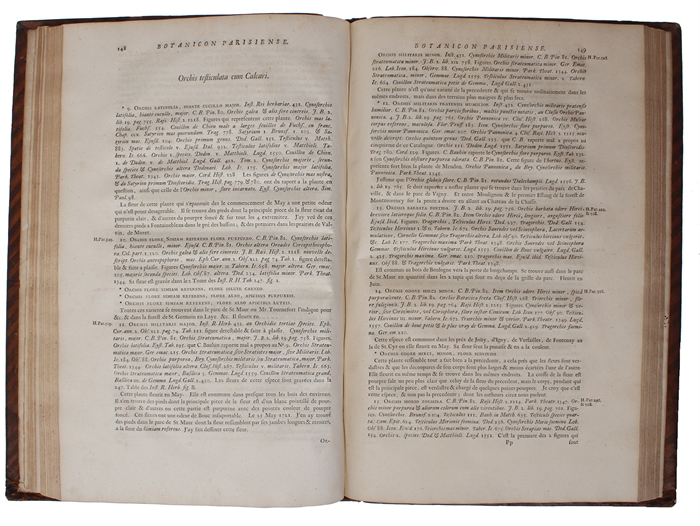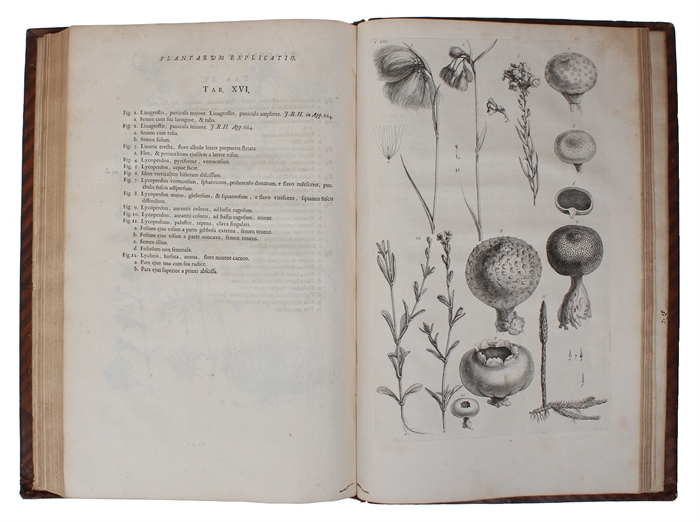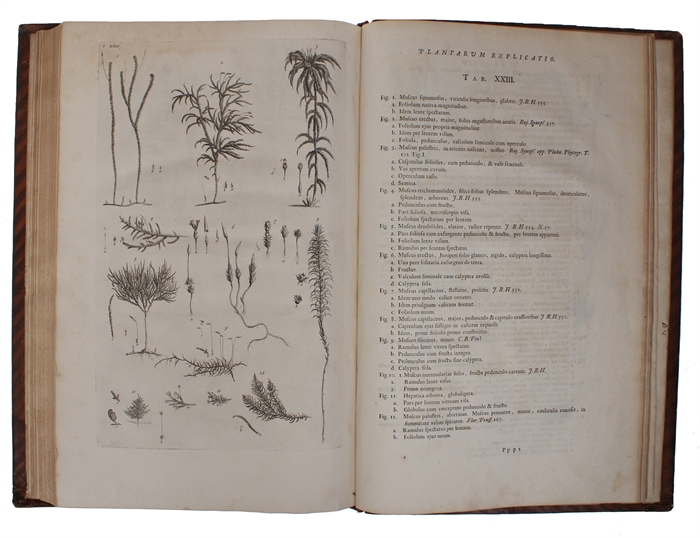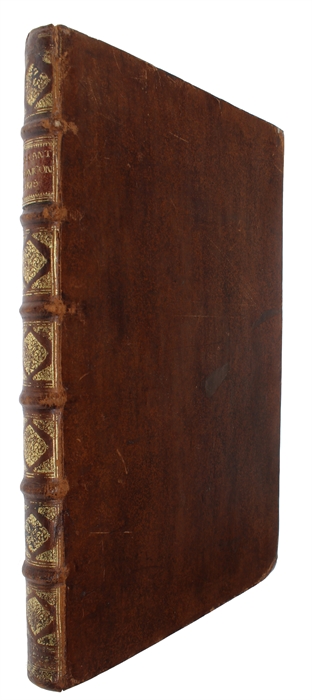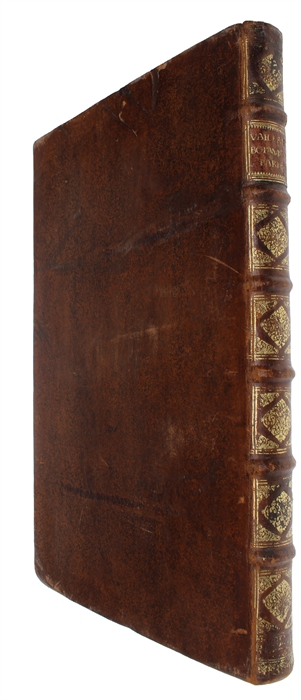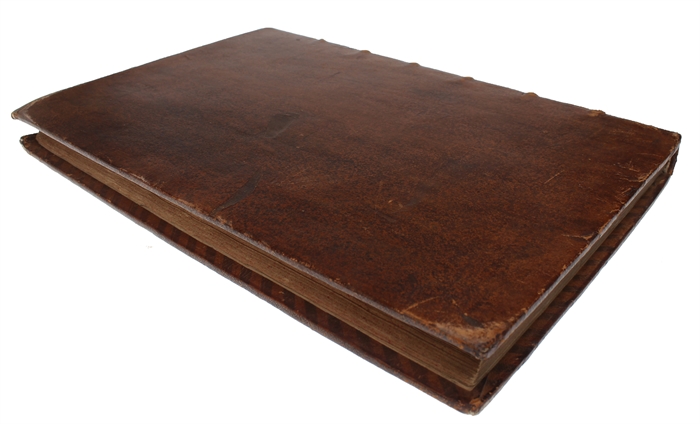A LANDMARK IN FRENCH BOTANICAL HISTORY
VAILLANT, SEBASTIEN.
Botanicon parisiense ou denombrement par ordre alphabetique des plantes, qui se trouvent aux environs de Paris.
Leiden & Amsterdam, Verbeek & Lakeman, 1727.
Folio (395 x 255 mm). In contemporary full calf with six raised bands and gilt lettering and ornamentation to spine. Boards with a few scratches and corners bumped. Inner front hindge split. Small stamp to title-page. Small worm tract in lower inner margin affecting 18 leaves, not affecting text. A fine copy. (36), XII, (4), 205, (14) pp. + 1 portrait, 1 folded map and 33 plates with 17 ff. with explanatory text (complete).
First complete edition with plates of Vaillant famous flora of Paris. A preliminary Latin edition (a ‘prodromus’, Hunt) was published in 1723 but this edition was without plates and had less text, thus the present edition being the first as it was intended. Vaillant spend several decades preparing the work and the present work is today regarded a landmark in French botanical history. "Sebastien Vaillant is honored in France as the man who first understood the nature of sex in plants. He spent many years on the preparation of his 'Botanicon parisiense', in which he developed his study of sexual characteristics, but died before the work could be published. He was a student of Tournefort's and considerably influenced Linnaeus" (Hunt). “Louis XIV ordered Vaillant to create a Cabinet de Drogues. Vaillant wished to cultivate exotic plants, however, and Fagon obtained permission from the king to build France’s first greenhouse (1714). When it proved too small, a second greenhouse, twice as large, was built in 1717. In the latter year Vaillant substituted for the titular professor at the Jardin du Roi, and his opening lecture (at six in the morning) drew a large audience. He was so well liked by the students that the professor allowed him to continue to give the course. Many scientists accompanied Vaillant on botanical excursions over a fourteen-year period, notably along the coasts of Normandy and Brittany. Vaillant’s unstinting dedication to his work undoubtedly aggrevated his asthmatic condition, and his premature death from an unidentified pulmonary disease prevented the publication of some of his manuscripts, notably his inaugural lecture at the Jardin du Roi. In it Vaillant established, on the basis of irrefutable evidence–and for the first time in France–the existence of plant sexuality. (A pistachio tree used in his demonstrations is still alive in the Alpine garden of the Muséum d’Histoire Naturelle.) Also notable are the posthumously published Catalogue des plantes des environs de Paris, often called the “petit botanicon,” and the Botanicon parisiense, properly so called, which was published by Boerhaave from Vaillant’s notes. The genus Vaillantia (Tournefort) and the species Galium Vaillantii and Bulliardia vaillantii are named for Vaillant, who was also interested mosses, lichens, and fungi. The most favorable and best-founded judgment of Vaillant was made by Linnaeus. Responding to criticisms by a number of botanists, including Dillenius and Jussieu, he declared: “He was a great observer, and every day I become more convinced that no one has been more skillful in establishing genera.” (DSB)
Nissen 2033
Hunt 470
Pritzel 9657
Sitwell, p. 145
Order-nr.: 60174

